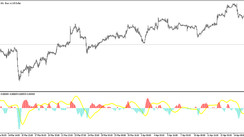A virtual data room is a digital alternative to a locked file cabinet that securely stores files and requires the use of a code for anyone to access them. However, there are other solutions available for digital collaboration. These include things such as a virtual private network. Here, we’ll be looking specifically at the pros and cons of a virtual data room.
Security
A virtual data room is highly secure. The project-by-project approach offers enhanced security, as a client or customer with access to a virtual data room is unable to access others.
You can also track user accounts, such as knowing who has access to data at what time and what actions they performed while in the system.
The tracking keeps record-keeping and accountability simple. It also means that the manager doesn't have to concern him or herself with ensuring that access is given only to those who need it.
However, virtual data rooms don’t necessarily adhere to the security needs of all types of data. There are only a small number of virtual data rooms, for example, that adhere to the IT security standards needed for the handling of financial data. A virtual data room also doesn’t necessarily come with the data retention requirements and uptime that may be required to meet certain record types in accordance with the law.
Speed of Implementation
You can establish a virtual data room for a certain client in just minutes. Then you’re able to exchange a digital file or post a contract that requires a signature almost as soon as the client requests one. This makes it far easier to apply due diligence as documents are easier to review earlier on in the process and visible to the parties who need to see them, regardless of location.
The disadvantage here, however, is that people can potentially skim over digital documents, which can cause them to miss important details and then later complain about any terms that they signed off on. This explains why attorneys advise that forms be printed and read properly before being digitally signed.
Cost
Setting up a virtual data room costs far less than setting up a virtual private network. You can set up a room for individual customers, cases, or projects, with everything for that individual need located in the one room. Multiple segregated servers for various customers aren’t needed unless you’re exchanging terabytes of information.
The disadvantage in this category is that you’ll need to set up a lot of VDRs and archive them as you go. When you have digital files so vast that they equate to thousands of filing cabinets, the arrangement causes your system to bloat and slow down.
Wrap Up
If you conclude after reading through these pros and cons that a data room is for you, you'll need to perform some data room comparisons. But you'll be well on your way to a more secure and affordable system. A virtual data room is a cost-effective solution for SMEs looking to reduce their administrative costs while implementing secure file sharing solutions.





